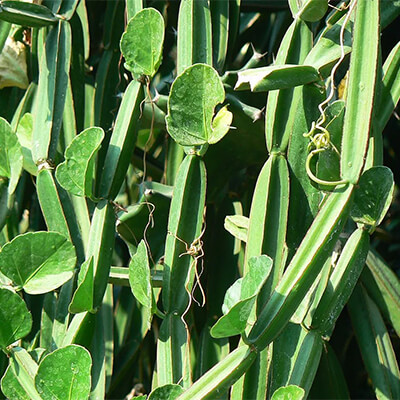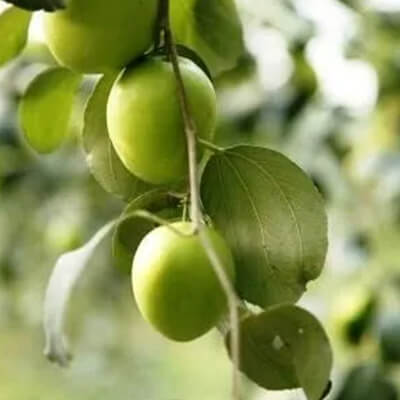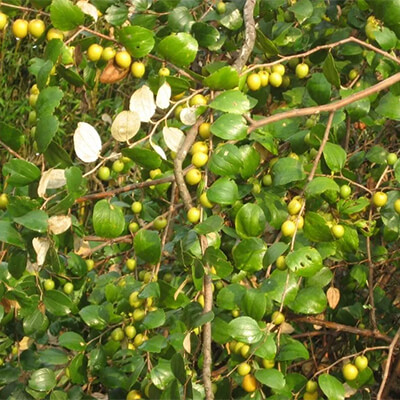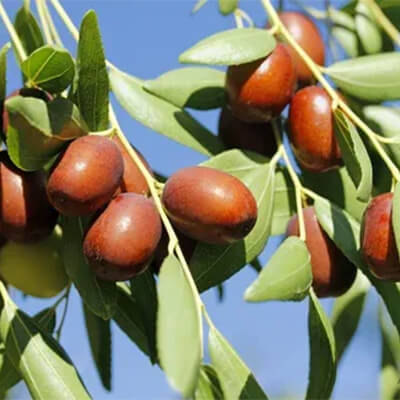On This Page
Asthishrunkhala (Cissus Quadrangularis) – A Natural Supplement for Bones and Its Related Disorders
Introduction
Asthishrunkhala locally known by the name Hadjod is famous for its use as Asthi Sandhanaka (heals the fracture of bones) and Asthi Sanharaka (protects bone from destruction). Asthishrunkhala is a cactus-like succulent fleshy plant that is botanically known as Cissus quadrangularis Linn. and belongs to the Vitaceae family. It is mainly distributed in India, Sri Lanka, Bangladesh, etc. In Ayurvedic classical texts, Hadjod is mentioned as Madhura Rasa (sweet), with hot potency and Pachana (digestive), Sara (mobility) properties, etc. Asthishrunkhala is used for various disorders like Arsha (piles), Krimi Roga, Bhagana, etc. Recent studies revealed that Hadjod consists of secondary metabolites like ascorbic acid, beta-sitosterol, 3- keto steroids, quercetin, calcium oxalate, amyrone, etc due to which it exhibits various activities like antimicrobial, anti-fungal, anti-viral, bone fracture healing, cytotoxic activities, etc. Its classical formulations like Lakshaadi Guggul, and Asthi Sanharaka Vataka are very famous among Ayurvedic practitioners.
Basonym of Asthishrunkhala / Hadjod
लता अस्थनां श्रिंखलेव प्रतिभाति |
The stem of Asthshrunkhala (Cissus quadrangularis) appears like a chain of bones.
Synonyms of Asthishrunkhala/ Hadjod
- According to morphology
ग्रंथिमान – कांडे ग्रंथि युक्त: |
Stem of Asthishrunkhala/ Hadjod has a nodular stem.
चतु: सिर: – चतस्र: सिरा: कांडे अस्य |
Asthishrunkhala/ Hadjod has got quadrangular stem.
- According to properties and action
अस्थि संहारी – अस्थि भग्नं संहारयति योजयातीति |
Asthishrunkhala/ Hadjod is one of the best drugs for the fracture of bones and it promotes the union of bones.
Regional names of Asthishrunkhala/ Hadjod
- Edible Stem Vine, Bone Setter (English)
- Harjora, Hadjod (Hindi)
- Mangaraballi, Mogaroli (Kannada)
- Ishangalam Parenda (Malayalam)
- Harjora, Kandvel (Marathi)
- Nalleru, Nellerutige (Telugu)
- Pindai (Tamil)
- Hadsankal (Gujarati)
- Vajra Valli (Kerala)
- Pipal (Urdu)
- Osio (Uri)
- Bhor, Pipal (Punjabi)
- Cissus Quadrangularis (Latin Name)
- Asthishrinkhala, Asthishrunkhala (Sanskrit)
Botanical Name
Cissus quadrangularis Linn.
Cissus is the name for Ivy (a creeper).
Quandrangularis means the stem is four-angled.
Family
Vitaceae (Draksha Kula)
Ayurveda reference for Asthishrunkhala/ Hadjod (Cissus quadrangularisLinn.)

Scientific classification of Asthishrunkhala/ Hadjod
| Kingdom | Plantae |
| Class | Dicotyledons |
| Subclass | Rosidae |
| Order | Rhamnales |
| Family | Vitaceae |
| Genus | Cissus |
| Species | quadrangularis |
Classification of Asthishrunkhala/ Hadjod as per Charaka and Sushruta
- Charaka: Not mentioned in Mahakshaya
- Sushruta: Not mentioned in Gana
Asthishrunkhala/ Hadjod’s description in Brihattrayi
No description in Brihttrayi
Historical background of Asthishrunkhala/ Hadjod
It is a fleshy perennial climber with a quadrangular stem. Its flowers are deep violet-colored and found in almost all parts of India. Though it is not described in the Brhattrayi texts. For fracture healing, Asthishrunkhla is considered as a most potent herb by Nighantus. Kaiyadeva, Bhavamisra, etc., have quoted it in their works.
Important note: There are two other varieties of Asthishrunkhala that are noticed (the botanical source may be the same). One will be very thin and possess two stem surfaces and the other one is quadrangular but very slim compared to the original plant.
External morphology of Cissus quadrangularis Linn.
- Habit: Hadjod or Asthishrunkhala is a tendril climber with jointed quadrangular stems that are stout and fleshy.
- Stems: Stems of Asthishrunkhala are leafless, when old, very long, fleshy, glabrous, much contracted at the nodes, quadrangular, the angles of the young branches winged, tendrils long slender, simple.
- Tendrils: Tendrils of Hadjod are simple, long, slender, and leaf opposed. In addition to the normal roots, some aerial roots arising from the jointed nodes grow downwards and strike the soil.
- Leaves: Leaves of Hadjod, simple, 2.5-5 cm. long, broadly ovate or reniform, sometimes 3-7 lobes, denticulate, glabrous, cordate, rounded, truncate or cuneate at the base, petioles 6-12 mm. long, stipules small, broadly ovate, obtuse.
- Flower: Flowers of Hadjod are Small and greenish. Flowers in shortly peduncled cymes with spreading umbellate branches, calyx cup-shaped, truncate, or very obscurely lobed; petals 4, ovate-oblong, acute 3 mm. long, hooded at the apex; disk erect, 4-lobed, style short, stout.
- Fruits: Berry obovoid or globose, scarcely 6 mm. long, apiculate, red when ripe, 1-(very rarely 2-) seeded.
Flowering and fruiting time
Post-rains (rainy season) and autumn seasons and onwards.
Distribution of Asthishrunkhala/ Hadjod
It is found in warmer regions in India and almost throughout the country. Asthishrunkhala is planted in boundary walls of gardens, farms, and hedges and cultivated in fields and also in pots for decoration. Throughout the higher parts of India and also globally cultivated in Ceylon, Malay Archipelago, and East Africa. Perennial large climbers found almost throughout the year surviving in different seasons. Propagated by stem nodes easily sprouting, seedling for the new plant of climbing habit. Conspicuous climber of the smooth, green-colored, and acutely 4-winged or angled stem, with fleshy leaves.
The useful part of Asthishrunkhala/ Hadjod
Stem (Kanda), Leaves (Patra).
Important phytoconstituent of Asthishrunkhala/ Hadjod
The plant contains calcium oxalate, carotene, ascorbic acid, some triterpenoids, traxerol, and sitosterol. The stem contains two tetracyclic triterpenoids, Beta-sitosterol, amyrin, and amyrone, etc.
Recent research on Asthishrunkhala
- A study is conducted to evaluate the beneficial effects of Cissus quadrangularis stem extract on antioxidant or oxidant status in Diabetes mellitus. The ethyl acetate fraction of Cissus quadrangularis is rich in quercetin and this indicates that it is a good supplement for the attenuation of diabetic complications. Lakshmi R.K. Divya BT & Mini S. “Cissus quadrangularis extract attenuates hyperglycemia mediated oxidative stress in streptozotocin-induced diabetic rats.” Redox Rep. 2014 Sep: 19 (5):214- 20.
- Aqueous extract showed acetylcholine-like activity on isolated ileum of rabbit and rat, the uterus of rat, dog tracheal muscle, and ileum in situ of dog. The responses on dog B.P. were analogous to muscarinic and nicotinic actions of acetylcholine (I.J.M.R; 1964, 52, 63).
- A glucoside from the plant showed a negative chronotropic effect on the myocardium. It was surface-acting, and its effect was surmounted by the excess of calcium ions (Ind. J. Med. Sci. 1971, 25, 400).
- Plant extract injected in dogs markedly hastened the rate of healing in artificially produced fractures of the femur (I.J.M.R; 1976, 64, 1365).
- Central nervous system activity.
- Antimicrobial activity
- Antibacterial activity
- Antioxidant
- Bone healing activity
- Analgesic activity
- Gastroprotective activity
Rasa Panchaka of Asthishrunkhala/ Hadjod
| Rasa (Taste) | Madhura (sweet) |
| Guna (Virtue) | Laghu (light), Ruksha (dry) |
| Virya (potency) | Ushana (hot potency) |
| Vipaka(post- digestion) | Madhura (sweet) |
Dosha Karma of Asthishrunkhala/ Hadjod
Vata- Kapha Shamaka, Pitta Vardhaka
Kapha Hara because of Ushana Virya.
Pitta Hara because of Ushana Virya, Madhura Rasa, and Madhura Vipaka.
Karma (Actions) of Asthishrunkhala/ Hadjod
Sandhaniya, Stambhana, Anulomana, Deepana, pachana, Raktashodhaka, Vrishya, Rakta Stambhaka.
Prayogarha Vyadhi (Therapeutic indication) of Asthishrunkhala/ Hadjod
- Abhyantra Paryoga (internal uses): Bhagna, Asthibhagna, Klaibya, Dourbalya, Pradara, Vatarakta, Phiranga Upadamsa, Agnimandya, Ajirna, Arsha, Krimi.
- Bahya Paryoga (external uses): Asthibhagna, Abhighatajasotha, Urdhvaga Raktapitta, Nasa Gata Rakta Srava, Karnaroga, Karnasrava.
Aamyik Paryog (Therapeutic uses) of Asthishrunkhala/ Hadjod
Bhagna (Fracture): In the case of Bhagna (Fracture) one should take milk processed with Asthisamhara (Cissus quadrangularis), ghee, lac, wheat, and Arjuna (Terminalia arjuna). (Vrinda Madhava. 46/ 8)
Putra Labartha (to achieve conception): To achieve conception, a lady after having a seasonal bath should consume juice and paste of Vajra Vallari (Cissus quadrangularis) mixed with Oil. (Vaidya Manorma 13/ 10)
Vatavyadhi (Vataja disorder):
- One who takes Asthisamhara along with meat or other items becomes free from fracture and other severe types of Vata Vyadhi. (Gada Nigreha. 2. 21. 30)
- The stem of asthisamhära devoid of bark and one-half dehusked black gram is pounded and then cooked in sesamum oil. This Vataka (Bada) alleviates Vata. (Bhava Prakasha NIghantu. 3/ 228)
Benefits of Asthishrunkhala/ Hadjod
- It is alternative, anthelmintic, blood-purifier, bonesetter, carminative and stomachic.
- It is useful in asthma, bowel complaints, dropped in-ear in the condition of otorrhea applied in fractures of bones, also taken internally; snuffed in epistaxis (bleeding from the nose), irregular menses, and scurvy.
- The leaves and stems are frequently taken with curry (In Southern India) and the stems are boiled and fried for preparing vegetables (Shaka- Kandasaka- Khadya) under dietetics, including condiments and other food preparations (e.g., Papada and Chatani).
- The young shoots of the plant are burnt to ash in a closed vessel and administered in dyspepsia and indigestion, and other similar complaints. The stems are ground and juice is obtained which is useful in otorrhea and epitaxies or nasal hemorrhage in the car and nasal troubles.
- The stem is bitter, laxative, aphrodisiac, tonic, analgesic, and allays Vata and Kapha and is used to cure piles, blindness, epileptic fit, tumors, loss of appetite, and constipation.
- It cures eye diseases, and chronic ulcers, is good for the spleen, beneficial in fractures of the bones, and is used in ascites, and it causes biliousness.
- The stems are internally given as well as externally applied in cases of bone fractures, it is one of the effective and frequent medicinally important uses of the drug, carrying the support of classical texts, traditional practice, and surgical trials.
- The stem paste or oil prepared with stem is topically applied over fracture, dislocation, and traumatic inflammation, and the stem is also recommended to be taken internally in such conditions, and the stem or plant juice is given also orally in these complaints.
- The leaves and young shoots are powerful alternatives, and the dried and powdered form of the stem is administered in certain bowel affections connected with indigestion.
- The stems are ground or beaten into a paste and internally used in asthma they are boiled in lime water, and it forms a preserve useful as a stomach. The stem paste is applied to wounds.
- Plant is recommended in Vata Vyadhi and conception (of the male child).
Matra (Therapeutic administration and dosage) of Asthishrunkhala/ Hadjod
- Swarasa (juice): 10- 20 ml

Have A Health Issue?
Consult Online
- Dr. Sahil Gupta (B.A.M.S., M.H.A.)
Ayurvedic Allergy Specialist
CEO & Founder of IAFA®
Classical reference of Asthishrunkhala/ Hadjod
Bhava Prakasha Nighantu Guduchyadi Varga- 226
Synonyms
ग्रन्थिमानस्थिसंहारी वज्रांगीवा अस्थि श्रृंखला |
अस्थिसंहारकः प्रोक्तो वात श्लेष्महरो अस्थिरुक् |
Bhava Prakasha Nighantu Guduchyadi Varga- 226, 227
Action and properties
उष्ण: सरः कृमिघं दुर्नाम्ह्णो अक्षि रोगजित् ||
रूक्ष: स्वादुर्लघुर्वृष्य: पाचन: पित्तलः स्मृत: |
Kaiydeva Nighantu Aushadi Varga, 1594, 1595
वज्र वल्ली सरा रूक्षा कृमि दुर्नमनाशिनी |
दीपत्युष्णा विपाके च स्वाद्वी वृष्या बलप्रदा ||
अस्थि सन्धानजननी वातश्लेष्महरा गुरु: ||
Priya Nighantu Pipplyadi Varga, 58
अस्थि श्रृंखलिका चोष्णा वातश्लेष्महरी सरा |
वातव्याधिहरो प्रोक्ता त्वस्थिसन्धानकारिणी ||
Vrinda Madhava 46/ 8 (Bhagna)
स घृतेन अस्थि संहारं लाक्षां गोधूममर्जुनम् |
Vaidya Manorma 13/ 10 (Putra Labartha)
वज्रवल्लीरसे तुल्यं तैलं तत्कल्क मिश्रितम् |
ऋतू स्नाता वधू: पिण्डं भक्षयेत पुत्र आकांक्षिणी ||
Bhava Prakasha Nighantu Guduchyadi Varga- 228
त्वदटिकाया: निर्माण विधि: गुणाश्च
काण्डं त्वग विरहितम अस्थि शृङ्गलायां
माषा्दद्रिदलम कंचुकँ तदर्द्धम।
समपिष्टं सुतनु ततस्तिलस्य तैले ||
संपकवं वटकमतीव वातहारि ||
Kaiydeva Nighantu Aushadi Varga, 1593- 1595
वज्र वल्ली- अस्थिसंहार:
वज्रप्रोक्ता अस्थिसंहारो वज्रांगी क्रोष्टु घण्टिका ||
अस्थि श्रृंखलिका ज्ञेय ग्रन्थिला वज्र वल्लरी |
वज्र वल्ली सरा रूक्षा कृमि दुर्नामनाशिनी ||
दीपन्युष्णा विपाके च स्वाद्वी वृष्या बलप्रदा |
अस्थि सन्धान जननी वात श्लेष्माहरा गुरु: ||
Chakradutta, Bhagna Chikitsa, 49/ 9
भग्न चिकित्सायाम् अस्थिसंहारादि चूर्णम्
संघृतेना अस्थिसंहारं लाक्षां गोधूमम अर्जुनम् |
Nighnatu Ratnakara
अर्शरोगे
अर्शसां तु विशेषेण हिता चैव अग्नि दीपनी |
चतुर्धारा काण्डवल्ली भूतोपद्रव कुलहा ||
Nighnatu Ratnakara
औषध गुण कर्माणि
अत्युष्णा आध्मान वाताश्च तिमिरं वातरक्तकम् |
अपस्मार वातरोगं नाशयेदिति कीर्त्तितम ||
Shodhala Nighnatu
उरुस्तम्भे
सार्धं मांसैरस्थि श्रृंगाटिकायाम भुङ्क्ते यद्वा व्यज्जनेनापरेण |
क्षिप्रं शाम्यत्यस्थि भंगो अस्य नूनं वातव्याधि: चातितीव्रो अपि य: स्यात् ||
Specific Formulation of Asthishrunkhala/ Hadjod
- Asthisamharadi Churna for Asthi Bhaganam Sandhimukta.
- Lakshadi Taila for Asthi Bhagna.
- Asthisamhara Taila for Vata Vyadhi, Bhagna.
- Shrinkhala Ghana
- Asthi Sanghatika Yoga
- Asthi Sanhara Arka
- Asthi Sanharaka Swarasa
- Asthi Sanharaka Lepa
- Asthi Sanharaka Churna
- Asthi Sanharaka Taila
Classical formulation use:
- Asthi Bhagna Vrana: Asthisrhunkhala/ Hadjod Patra (leaves) are crushed and applied on Vrana (wound) to arrest bleeding. Asthi Sanharaka Lepa is indicated for Sadya Vrana (fresh wound cuts). This formulation is mainly used in Vrana (Wound) form due to Asthi Bhagna (bone fracture).
- Asthi Bhagna Chikitsa (Bone fracture treatment): Asthi Sanharaka Churna i.e the combination of Asthshrunkhala, Arjuna, Laksha, and Godhuma is taken along with Ghrita and milk for the treatment of the bone fracture.
- Aam Vata (rheumatoid arthritis), Sandhi Vata (osteoarthritis): Asthi Sanharaka Taila is formed by oil processed by Panchanga (whole part) of Asthishrunkhala/ Hadjoda. This oil on the local application gives relief to symptoms of Aam Vata (rheumatoid arthritis), and Sandhi Vata (osteoarthritis).
- Krimi roga (worm infestation), Nasa Gtaa Rakta (Epistaxis): The Swarasa (juice) of Kanda (stem) of Asthishrunkhala/ Hadjod is used for Nasya (Nasa/ nose pulling) in case of epistaxis and worm infestation (along with Vidanga Churna).
Suggestive reading regarding Cissus quadrangularis
- Brahmkshatriya HR, Shah KA, Ananthkumar GB, Brahmkshatriya MH. Clinical evaluation of Cissus quadrangularis as an osteogenic agent in maxillofacial fracture: A pilot study. Ayu. 2015 Apr-Jun; 36 (2): 169- 73. doi: 10.4103/ 0974- 8520.175542. PMID: 27011718; PMCID: PMC4784127.
- Sundaran J, Begum R, Vasanthi M, Kamalapathy M, Bupesh G, Sahoo U. A short review on the pharmacological activity of Cissus quadrangularis. Bio information. 2020 Aug 31;16(8):579-585. doi: 10.6026/97320630016579. PMID: 33214745; PMCID: PMC7649020.
- Singh V, Singh N, Pal US, Dhasmana S, Mohammad S, Singh N. Clinical evaluation of Cissus quadrangularis and moringa oleifera and osteoseal as osteogenic agents in mandibular fracture. Natl J Maxillofac Surg. 2011 Jul; 2 (2): 132- 6. doi: 10. 4103/ 0975- 5950. 94466. PMID: 22639499; PMCID: PMC3343389.
- Bhagat PK, Bhat Kumar MR, Rao SM, Nampurath KG, Chamallamudi RM, Nayak RS, et al. Petroleum ether extract of Cissus quadrangularis enhance bone marrow mesenchymal stem cell proliferation and facilitates osteoblastogenesis. J Clin Sao Paulo. 2009; 64: 10.
- Zaki S, Malathi R, Latha V, Sibi G. A review on the efficacy of Cissus quadrangularis in pharmacological mechanisms. Int J Clin Microbiol Biochem Technol. 2020; 3: 049-053.
- Deka DK, Lohan LC, Saikia J, Mukti A. Effect of Cissus quadrangularis in accelerating the healing process of experimentally fractured radius ulna of dog: A preliminary study. Indian J Pharmacol. 1994; 26: 44– 5.
- Kharik Amol, Morade Swati, Surse Yogesh, & Dehankar Manisha. (2019). TO EVALUATE THE EFFICACY OF ASTHISHRUNKHALA (CISSUS QUADRANGULARIS) ON ACCELERATION OF BONE HEALING IN FRACTURED BONE. International Journal of Ayurveda and Pharma Research, 7(9), 1-7.
- Murthy, Kotamballi & Vinodkumar, A Vanitha & Swamy, Mahadeva & Gokare, Ravishankar. (2003). Antioxidant and Antimicrobial Activity of Cissus quadrangularis L. Journal of medicinal food. 6. 99-105. 10.1089/109662003322233495.
- Rahul Mahajan, Sanjeev Gupta, Nitin Choudhary, Neeraj Mahajan, Vishal R Tandon, Jyotsna Suri, and Ghanshyam Dev (2020); EFFECT OF CISSUS QUADRANGULARIS ON FRACTURE HEALING: AN ANIMAL STUDY Int. J. of Adv. Res. 8 (Jun). 368-375] (ISSN 2320-5407
- Piyush S. Bafna, Payal H. Patil, Saurabh K. Maru, Rakesh E. Mutha, Cissus quadrangularis L: A comprehensive multidisciplinary review, Journal of Ethnopharmacology, Volume 279, 2021, 114355, ISSN 0378-8741.
- Joseph, Baby & George, Jency. (2013). Cissus Quadrangularis in the Treatment of Osteoporosis. World Journal of Pharmaceutical Research.
- Divya, S. & Kannan, R. (2022). HISTOLOGICAL STUDIES ON THE CISSUS QUADRANGULARIS PLANT EXTRACT TREATED FISH OREOCHROMIS MOSSAMBICUS PETER. INDIAN JOURNAL OF APPLIED RESEARCH. 41-44. 10.36106/ijar/2314912.
- Anwar, Parvin & Sezhian, Uma & Narasingam, Arunagirinathan. (2020). Endophytic Bacteria from Cissus quadrangularis, A Promising Source of Bioactive Compounds. Biosciences, Biotechnology Research Asia. 17. 115-126. 10. 13005/ b bra/ 2816.
- Xavier, Alphienes & Suresh, Parepalli & VP, Karthik & Kumaravelu, dr.punnagai. (2019). Anticancer Activity of Cissus Quadrangularis L. Methanolic Extract Against MG63 Human Osteosarcoma Cells – An In-Vitro Evaluation using Cytotoxicity Assay. Biomedical and Pharmacology Journal. 12. 10. 13005/ b pj/ 1724.
References
- Bhavamishra. In: Bhava Prakasha Nighantu, Guduchyadi Varga 11th ed. part 2. Brahma Shankara Mishra., editor. Varanasi: Choukhambha Bharati Academy; 2009.
- Bhavprakasha, commentary by Bulusu Sitaram, forwarded by K.C.Chunekar
- Sharma PV, Kaideva Nighantu. Aushadhi Varga. Chaukhamba Orientalia, Varanasi; 2006:
- P.V. Sharma, Priya Nighantu, ipplyadi Varga, Chaukhamba Krishnadas Academy; Varanasi.
- Dr. Gyanendra Pandey, Dravyaguna Vigyana, reprint 2012, Chawkhamba Krishnadas Academy
- K. Niteshwar Dravyaguna Vigyan, reprint 2017.
- Dr. J.L.N. Sastry and Dr. B.S. Sastry, Dravyaguna Vigyana, Chaukhambha Orientalia, Varanasi.
- Vaidya manorma
- Nighantu Ratnakara
- Shodhala Nighantu, Chaukhambha Orientalia, Varanasi.
- Chakrapanidatta, Chakradatta with the vaidaya Prabha hindi commentary by indra deva tripathi, chaukambha sankrita sansthan, varanasi 2nd Edition, 1994.
Ayurveda is an Indian system of medicine that is popular since ancient times. Dr. Gupta’s IAFA® has been conducting research studies to find out different phytoconstituents of herbs and their action in the body. Such knowledge acquired by our experts is used in the preparation of medicines and providing the treatment facilities safely and effectively. IAFA® is the provider of safe and effective treatment for a wide range of diseases, mainly allergic diseases all based on Ayurveda.
Was this Page Helpful?
Read More Articles

Souvira / Raja Badara (Zizyphus Sativa, Ziziphus Xylopyrus, Zizyphus Vulgaris) – Part – 2
Souvira or Raja Badara botanically known as Zizyphus vulgaris or Zizyphus xylopyra is a deciduous tree…

Karkandhu / Kshudra Badara (Zizyphus Nummularia) – Part – 3
Karkandhu or Z. nummularia is a type of Badara that is commonly…

Badara / Kola (Ziziphus Jujuba, Ziziphus Mauritiana) – Part – 1
Badara is wildly and cultivated found in India and it is a…












